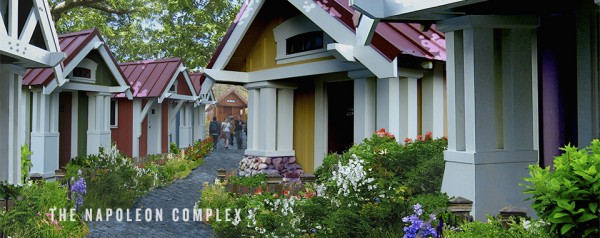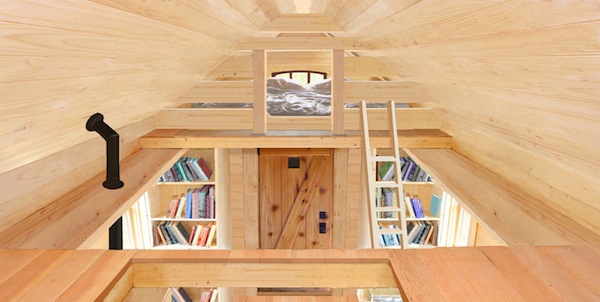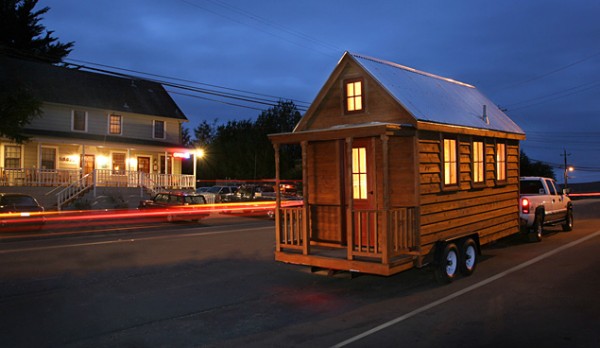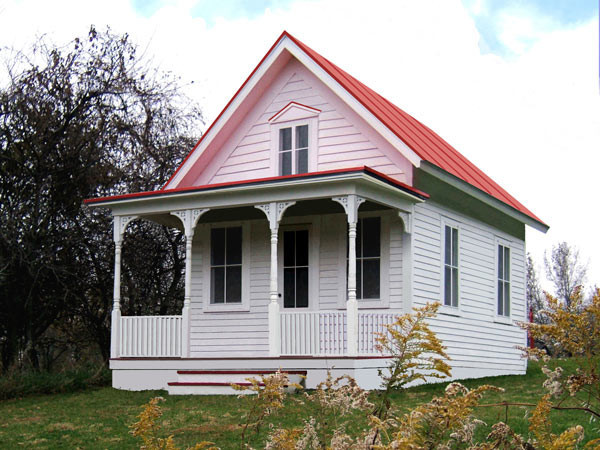The tiny homes movement has taken on a big life of its own in recent years and appears to become even larger news as we move into 2013. In December, tiny housing pioneer Jay Shafer, founder of Tumbleweed Tiny House Co., has branched out on his own to form a new company, called Four Lights Houses, and is working on zoning a new California housing development strictly for tiny homes in the range of 270 to 700 square feet.
Meanwhile, Shafer’s former company, Tumbleweed, is about to hit the road with a nationwide workshop program for 2013, aimed at educating the public about the benefits of building their own tiny homes.

Shafer is happy to be tongue-in-cheek when discussing his tiny and—let’s face it—adorable houses. The name for his Four Lights housing project is called the Napoleon Complex: Cohousing for the Antisocial, in reference to the tendency of his clientele to desire a break from society and “the grid.” He also half-jokingly describes the park as “the most beautiful trailer park in the world.”
His message, however, is serious: Tiny houses come with tiny carbon footprints, smaller price tags and fewer construction materials. They encourage people to live with fewer possessions, he says, which, in turn, can help lead to less greenhouse gas emissions. Since many jurisdictions and developers ban the construction of houses that are under a certain size, Shafer is negotiating with Sonoma County, Calif., to create special exceptions to these zoning laws to create a subdivision specifically for tiny homes.

“I believe people should be allowed to live as simply as they choose,” Shafer writes on the new Four Lights site. “In many ways, tiny houses work best in concert with other tiny houses and shared amenities. This is a dream long-shared by many, including myself.”
The Napoleon Complex, he says, will be zoned as an R.V. park, but will “look and feel” more like a planned pedestrian-friendly community of semi-permanent small homes. Plans call for 40 to 70 houses being grouped at a density of 16 to 22 houses per acre, along with a 1,600-square-foot common house, private gardens and storage space, and 1.5 parking spaces per house. The community will be run like a co-op, with a small fee to cover the cost of maintaining common areas. If all goes well, he adds, the development should be open by 2015.
As for the Tumbleweed workshops, with Shafer helped create, the curriculum will be focused on those who admire the tiny-house lifestyle but have never built a house before and don’t know where to begin. Over the course of two days, participants will learn how to identify their strengths, understand the zoning laws and building codes in their municipalities and build a home in the most cost-effective manner.

Some key insights to be gained from the classes include finding the right tools for the job; choosing the most environmentally sound materials; preventing moisture problems from condensation; using proper siding, roofing and insulating techniques to save energy; installing the right appliances and cabinets for tight spaces; and picking the right kind of trailer.

This month, the Tumbleweed workshops will begin in Seattle, Jan. 12-13, before going to Orlando, Fla., Jan. 26-27, and Santa Fe, N.M., Feb. 23-24. (Another workshop is scheduled for Feb. 9-10 in Boston, but it is already sold out.) Other cities in the first half of 2013 will include Berkeley, Calif.; Asheville, N.C.; Austin, Texas; Chicago; Boulder, Colo.; Portland, Ore.; and Nashville, Tenn.
For a detailed list of dates and video clips from these events, please visit the Tumbleweed Workshops page.